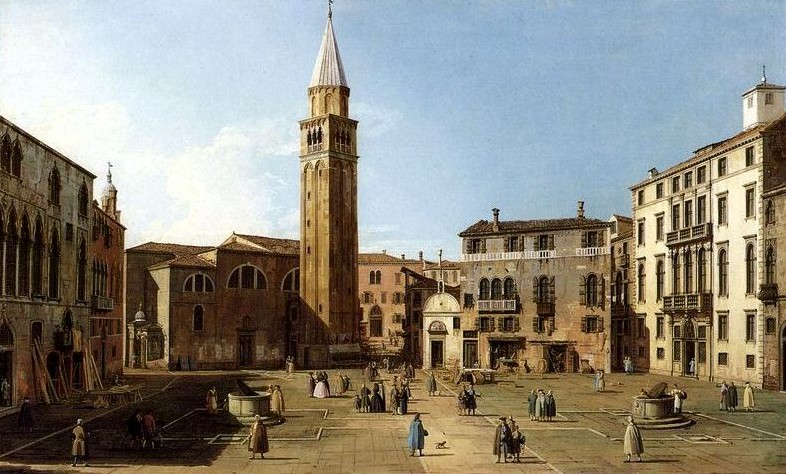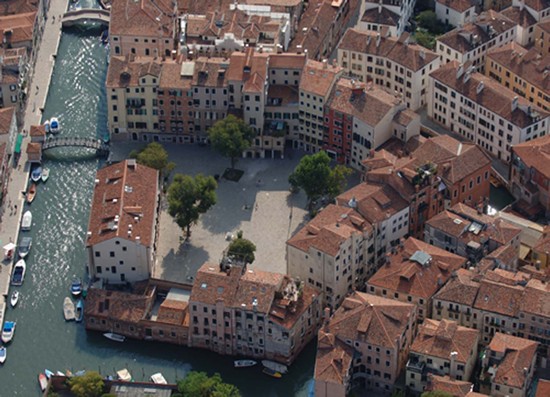It is well known that Venice only has one place that is called 'piazza': St. Mark's Square, the piazza San Marco). The word Campo, used for all other urban places, means a open field - a description that fits most of the places that are visible on the map "Venetie MD". Campi were rarely paved. Even the place in front of the former cathedral San Pietro di Castello was grassland, while others like Campo San Giovanni e Paolo with the Dominican church had at least a partial brick covering. Nevertheless, in his famous book Venetia città nobilissima et singolare (1581), Francesco Sansovino points out the Campi as a special feature of Venice. Today, nearly all places are paved with a grey volcanic rock.
Venetian places are generally named after the church dominating the campo and had different functions. Apart from serving as a graveyard until the 18th century, the public wells contributed to the city's need of freshwater. It was not until the 19th century that the central cemetery of Venice, located on the island of San Michele, was established. A brief glimpse on a city map of Venice shows, that the Campi cannot be compared and can be, depending on whether they border a canal or not, or whether they are surrounded by palaces or modest houses, of entirely different nature. While the huge Campo San Polo has a convex eastern side and the apse of a church protruding in the place, the Campo Santa Maria Mater Domini is of a nearly perfect rectangular shape. New urbanistic models were introduced in the 19th century and altered the aspect of some places, like the Campo Manin, which is characterized by neo-gothic and neo-renaissance buildings and a monument to a local hero in the middle, or the Campo Santa Marina, which is disfigured by the demolition of the homonymous church.
The subsequent pages offer monographs of some Venetian Campi and have maps with legends of the most important monuments. You can also use the abstract city map for navigation.












